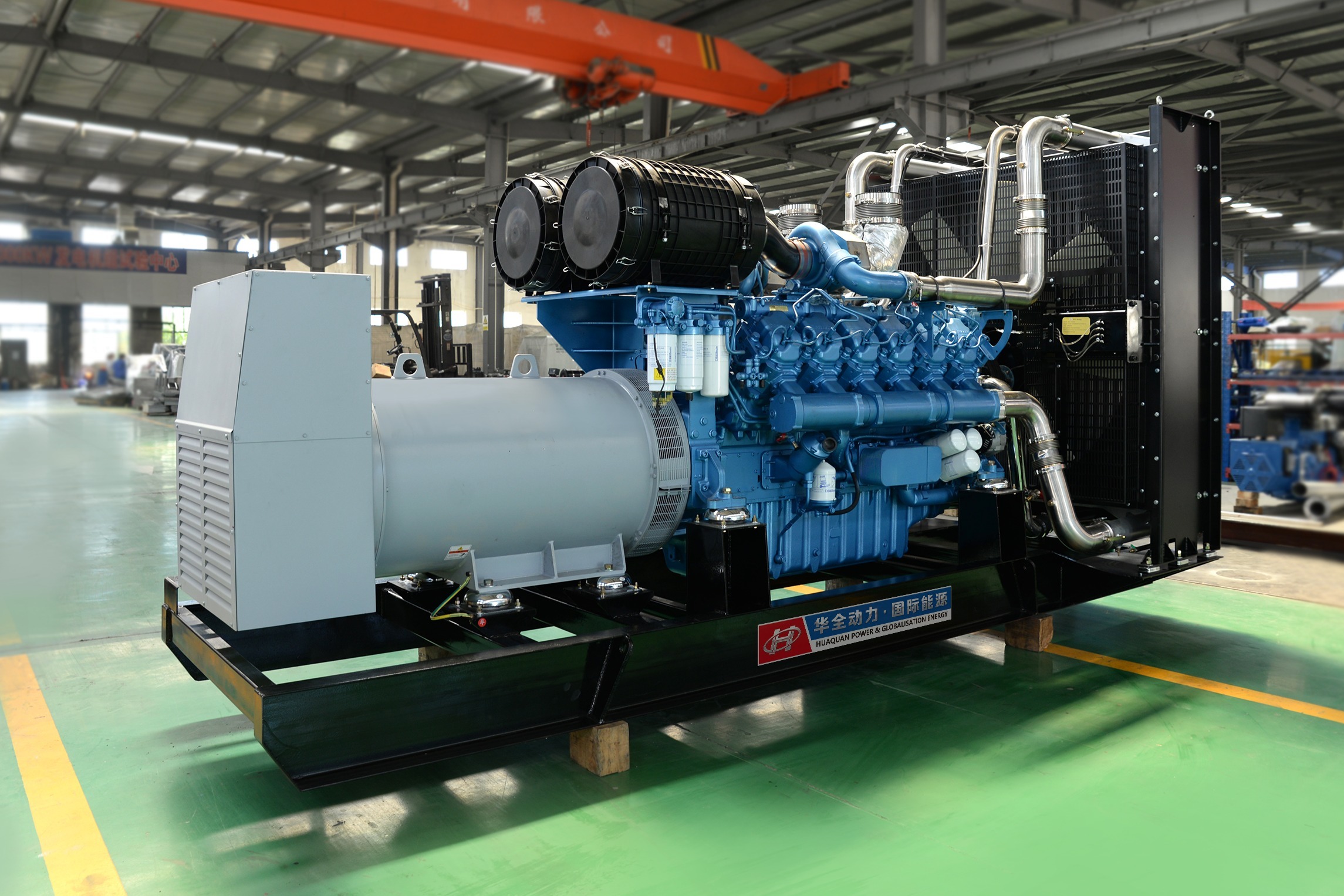Introduction
In today's modern world, electricity plays a crucial role in powering our society. The demand for electricity continues to grow, driven by a variety of factors such as population growth, industrialization, and technological advancements. As the electricity grid becomes increasingly complex and interconnected, maintaining a stable frequency is essential to ensure the reliable operation of the grid. Frequency regulation is a key aspect of grid management, and diesel generators have emerged as a valuable tool for providing this service.
Diesel generators are versatile and reliable power sources that have been used for decades in various applications, from backup power for critical facilities to primary power generation in remote locations. In recent years, diesel generators have also been employed for frequency regulation, helping grid operators maintain the balance between electricity supply and demand. This article provides a comprehensive guide to diesel generators for frequency regulation, exploring their benefits, challenges, and best practices for integration into the grid.
Understanding Frequency Regulation
Frequency regulation is the process of maintaining the frequency of an electricity grid within a narrow range around its nominal value, typically 50 Hz or 60 Hz, depending on the region. The frequency of an electricity grid is a key indicator of its stability and reliability, reflecting the balance between electricity supply and demand. When 500kw diesel generator for construction tools exceeds supply, the frequency of the grid decreases, while an excess of supply leads to an increase in frequency.
Grid operators are responsible for ensuring that the frequency of the grid remains within an acceptable range to prevent disruptions to the electricity supply. Frequency regulation involves adjusting the output of power generators in real-time to match the fluctuating demand for electricity. This is achieved through a combination of fast-responding resources, such as battery storage systems, gas turbines, and diesel generators, which can quickly ramp up or down their output to stabilize the grid frequency.
Diesel Generators for Frequency Regulation
Diesel generators have long been recognized for their reliability, durability, and ability to provide backup power during outages. In recent years, diesel generators have also gained popularity for their capability to provide frequency regulation services to the grid. Diesel generators are well-suited for frequency regulation due to their fast response times and ability to quickly ramp up or down their output to match changes in demand.

One of the key advantages of using diesel generators for frequency regulation is their ability to provide large amounts of power on short notice. Diesel generators can ramp up their output within seconds, making them ideal for addressing sudden spikes in electricity demand or supply. This rapid response time allows diesel generators to help maintain grid frequency stability and prevent potential disruptions to the electricity supply.
Another benefit of diesel generators for frequency regulation is their flexibility in operation. Diesel generators can be easily dispatched and controlled remotely by grid operators, allowing them to respond quickly to changing grid conditions. Additionally, diesel generators can operate independently of weather conditions or fuel availability, making them a reliable source of power for frequency regulation.
Challenges and Considerations
While diesel generators offer several advantages for frequency regulation, there are also challenges and considerations that need to be addressed when integrating them into the grid. One of the main challenges is the environmental impact of diesel generators, as they emit pollutants such as nitrogen oxides (NOx), particulate matter, and carbon monoxide during operation. To mitigate these emissions, diesel generators can be equipped with emissions control technologies such as selective catalytic reduction (SCR) systems and diesel particulate filters (DPF).
Another consideration when using diesel generators for frequency regulation is the cost of fuel and maintenance. Diesel fuel prices can be volatile, affecting the operating costs of diesel generators. Regular maintenance and servicing are also essential to ensure the reliable operation of diesel generators and prevent unexpected breakdowns. Grid operators must carefully assess the total cost of ownership of diesel generators and weigh it against the benefits they provide for frequency regulation.
Integration and Best Practices
Integrating diesel generators for frequency regulation into the grid requires careful planning and coordination to maximize their effectiveness and minimize potential risks. Grid operators should consider the following best practices when deploying diesel generators for frequency regulation:
1. Sizing and Placement: Properly sizing diesel generators based on the expected frequency regulation requirements is essential to ensure they can meet the demand for power when needed. Additionally, strategically placing diesel generators in locations with high electricity demand can help improve grid stability and reliability.
2. Control and Monitoring: Implementing advanced control and monitoring systems for diesel generators is crucial for optimizing their performance for frequency regulation. Real-time monitoring of grid frequency and demand allows grid operators to adjust the output of diesel generators accordingly to maintain grid stability.
3. Grid Interconnection: Ensuring seamless integration of diesel generators into the grid requires reliable grid interconnection infrastructure. Proper synchronization and coordination with other power generation sources, such as renewables and gas turbines, are necessary to maintain grid frequency within acceptable limits.
4. Emissions Control: Implementing emissions control technologies on diesel generators helps reduce their environmental impact and ensure compliance with regulatory requirements. Regular emissions testing and maintenance of emissions control systems are essential to minimize pollutants released into the atmosphere.
5. Emergency Preparedness: Developing contingency plans for emergency situations, such as fuel shortages or equipment failures, is vital to maintain grid stability during frequency regulation operations. Backup power sources and redundancy measures can help prevent disruptions to the electricity supply.
Conclusion
Diesel generators have proven to be valuable assets for frequency regulation, helping grid operators maintain the stability and reliability of electricity grids. Their fast response times, flexibility, and reliability make them well-suited for addressing fluctuations in grid frequency and ensuring a secure electricity supply. By following best practices and considering key challenges, grid operators can effectively integrate diesel generators into their frequency regulation strategies and optimize their performance for the benefit of the grid and society as a whole.
